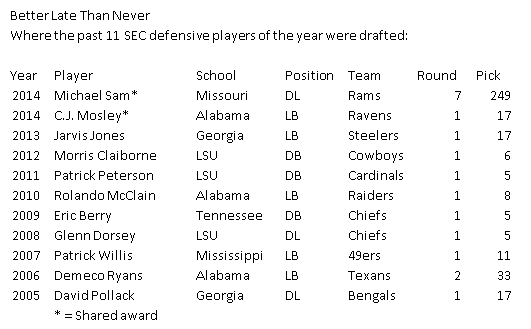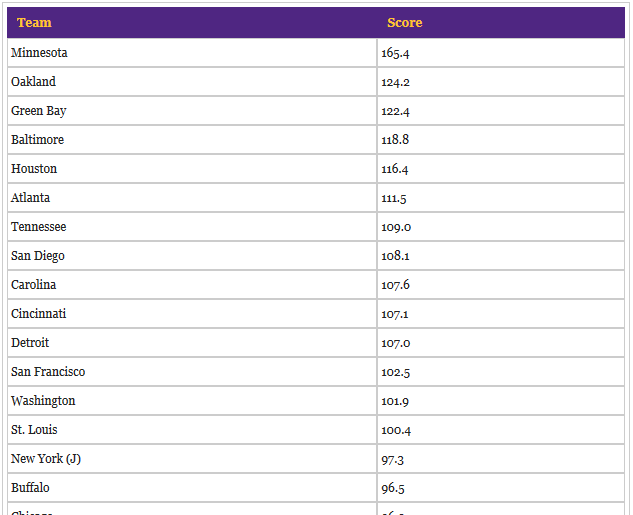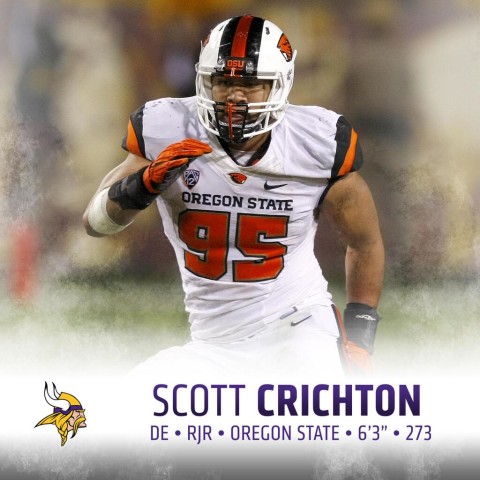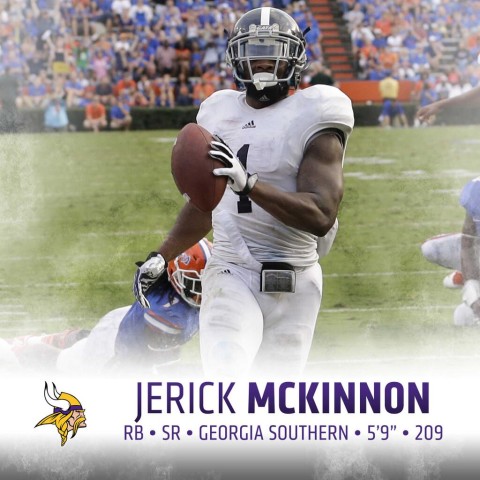 Many fans have been feeling frustrated with the Minnesota Vikings for their apparent lack of interest through the free agency period of the NFL’s year. The team indicated interest — but not sufficiently strong interest — in a few big name free agents, but didn’t end up signing any of them. For fans hoping for interesting story lines (and headlines), there was much disappointment. Adding to that, of course, is the morale-draining saga of Adrian Peterson’s ongoing disciplinary issues with the league’s head office and his clearly communicated desire to leave Minnesota as soon as possible.
Many fans have been feeling frustrated with the Minnesota Vikings for their apparent lack of interest through the free agency period of the NFL’s year. The team indicated interest — but not sufficiently strong interest — in a few big name free agents, but didn’t end up signing any of them. For fans hoping for interesting story lines (and headlines), there was much disappointment. Adding to that, of course, is the morale-draining saga of Adrian Peterson’s ongoing disciplinary issues with the league’s head office and his clearly communicated desire to leave Minnesota as soon as possible.
With all that in the background, Arif Hasan does his best to pull out the non-headline-getting but important roster moves the team has made since the start of the new league year and how that may affect their approach to the draft at the end of the month:
The Vikings re-signed a number of players, none of whom are expected to start, but some of whom can be critical depth going forward.
The most important of those re-signings was a former Arena Football League player entering age 31: Tom Johnson. A shockingly effective defensive tackle in rotation, it would have been easy to expect Johnson not only to be cut in training camp, but not to be picked up by another team.
Instead, he had the fifth-most sacks per snap of any defensive tackle with at least 25 percent of their team’s snaps, per Pro Football Focus. That’s more than Gerald McCoy and Aaron Donald.
[…]
In addition, the Vikings re-signed potential starting guard Joe Berger and last year’s starting running back, Matt Asiata. Cullen Loeffler, the long snapper, was also signed to a contract for one year.
Those re-signings don’t reveal much about the Vikings’ plan for next year, but letting linebacker Jasper Brinkley walk does. The Vikings did not contact Brinkley much throughout the free agency process, per Chris Tomasson of the St. Paul Pioneer Press, until the last minute to offer a one-year deal. He instead took a two-year deal in Dallas.
The Vikings are clearly willing to move on from him at inside linebacker, and such movement could mean there’s already a plan in mind for one of the two linebacker positions that seem to be unsettled. The Vikings’ willingness to go after Brinkley for a small amount may mean that plan could use depth, but it does not require the player who played there last year.
The Berger re-signing, along with re-signing restricted free agent Mike Harris (who played both guard and tackle for the Vikings last year as injuries piled up) may provide clues into the guard battle, which we’ll discuss a bit more below.
Arif goes on to discuss the (few) free-agent signings, including the Polish man-mountain Babatunde Aiyegbusi, trades (Matt Cassel to Buffalo, Mike Wallace from Miami), and cuts (headlined by Greg Jennings). After all that, he tries to gaze into the cloudy crystal ball to determine what the Vikings are likely to do in the draft:
There is no real “known” need, but the assumption that the Vikings are interested in defensive backs and linebackers seems fairly widely held by national media. It’s in part motivated by the extensive contact the Vikings have had with both sets of position groups in a list compiled by the Star Tribune.
So far, it seems like the Vikings’ plan is to draft positions they think are in the worst shape but let players fight it out for those positions of need and prove that they are talent, not potential. Which is to say, let the young roster develop and then weed out the ones who don’t develop quickly enough by next year.
With the Vikings’ broad pattern of selecting late-round linemen, don’t expect a guard early in the draft. One could imagine with Greenway being restructured instead of cut that outside linebacker may not be a selection early on. But that could just be the cost of mentorship—or a sign of a lack of confidence in their outside options behind Greenway (which seems unlikely).
Minnesota has a bad left tackle in Matt Kalil, but there’s real reason to think he’s not as bad as he has been in the last two years. His rookie year was good, and he could tap into the talent there, and the last five games of this last season were better than the previous 27.
In that case, the popular picks for offensive linemen like Brandon Scherff, La’el Collins or Andrus Peat may not play out. Besides, cutting a guard on the off chance the lineman you like is there seems more reckless than general manager Rick Spielman has shown to be.
The best option may be trading down in the draft to grab an inside linebacker and cornerback with the early picks or potentially a safety. Otherwise, expect a year with lots of young players struggling, while a few shine.



 The Vikings selected Oregon State defensive end Scott Crichton with the first of their third round picks. The Daily Norseman‘s
The Vikings selected Oregon State defensive end Scott Crichton with the first of their third round picks. The Daily Norseman‘s  With their last pick of the evening, the Vikings selected running back Jerick McKinnon from Georgia Southern.
With their last pick of the evening, the Vikings selected running back Jerick McKinnon from Georgia Southern. 

